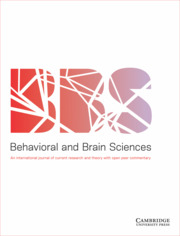Crossref Citations
This article has been cited by the following publications. This list is generated based on data provided by Crossref.
Švarcová, Silvie
Bezdička, Petr
Hradilová, Janka
and
Hradil, David
2024.
Laboratory X-ray powder micro-diffraction in the research of painted artworks.
Journal of Applied Crystallography,
Vol. 57,
Issue. 6,
p.
1709.


Target article
On the deep structure of social affect: Attitudes, emotions, sentiments, and the case of “contempt”
Related commentaries (26)
A sentimental education: The place of sentiments in personality and social psychology
Above and below the surface: Genetic and cultural factors in the development of values
Affect in social media: The role of audience and the presence of contempt in cyberbullying
Are sentiments subject to selection pressures? The case of oxytocin
Attitude–Scenario–Emotion (ASE) sentiments are superficial
Building a house of sentiment on sand: Epistemological issues with contempt
Constructing contempt
Contempt as the absence of appraisal, not recognition, respect
Contempt – Where the modularity of the mind meets the modularity of the brain?
Contempt, like any other social affect, can be an emotion as well as a sentiment
Deep mechanisms of social affect – Plastic parental brain mechanisms for sensitivity versus contempt
Dominance as a competence domain, and the evolutionary origins of respect and contempt
From disgust to contempt-speech: The nature of contempt on the map of prejudicial emotions
Further implications in analyzing contempt in modern society
How dare you not recognize the role of my contempt? Insight from experimental psychopathology
Including pride and its group-based, relational, and contextual features in theories of contempt
Is humility a sentiment?
On the substantial contribution of “contempt” as a folk affect concept to the history of the European popular institution of charivari
Oxytocin shapes the priorities and neural representations of attitudes and values
Prejudice is a general evaluation, not a specific emotion
Sentiments and the motivational psychology of parental care
Socioecological factors are linked to changes in prevalence of contempt over time
Two kinds of respect for two kinds of contempt: Why contempt can be both a sentiment and an emotion
Warmth and competence as distinct dimensions of value in social emotions
Warmth, competence, and closeness may provide more empirically grounded starts for a theory of sentiments
We need more precise, quantitative models of sentiments
Author response
Seeing the elephant: Parsimony, functionalism, and the emergent design of contempt and other sentiments